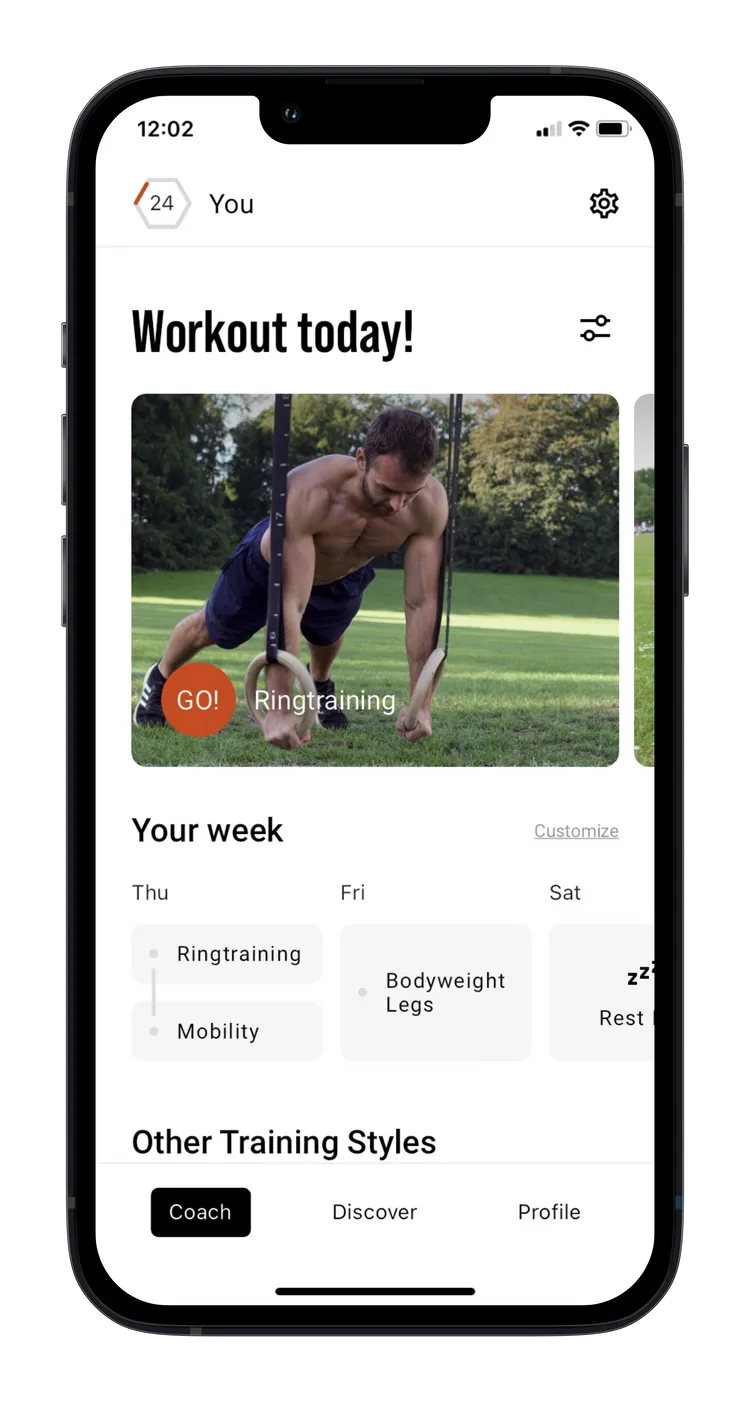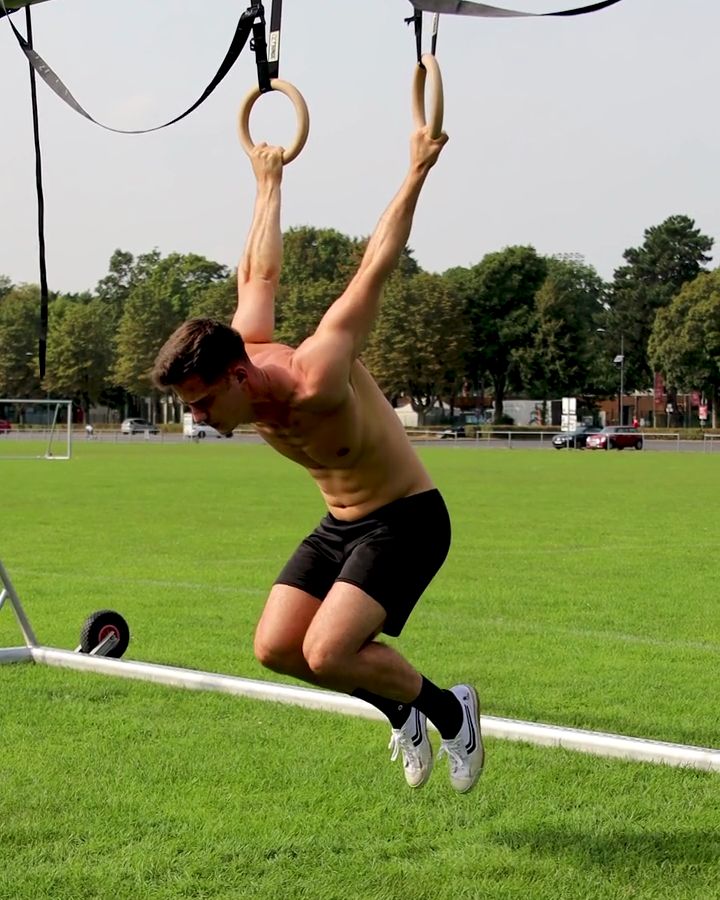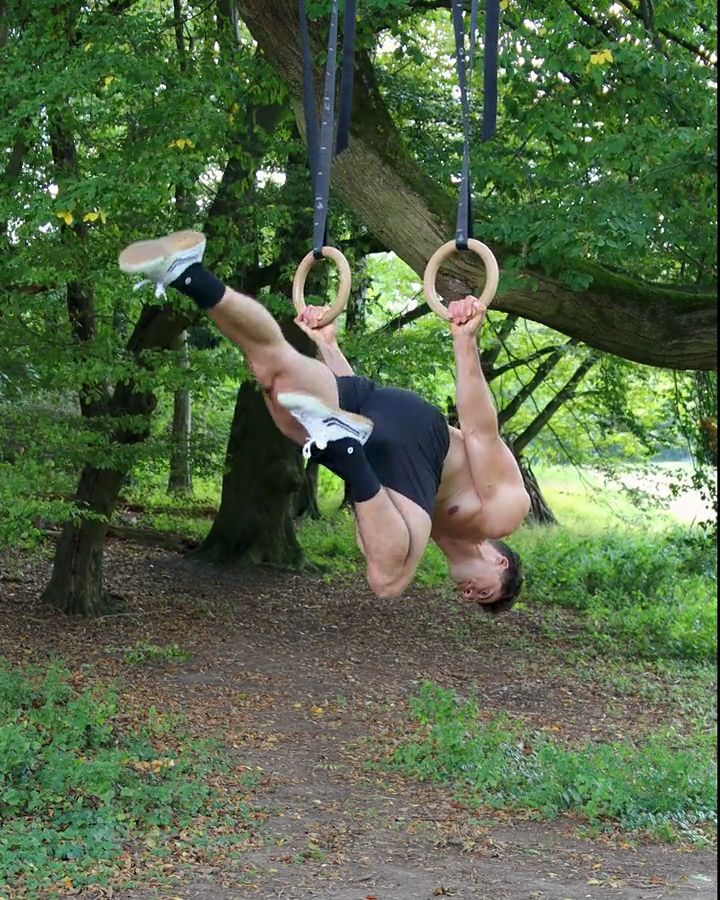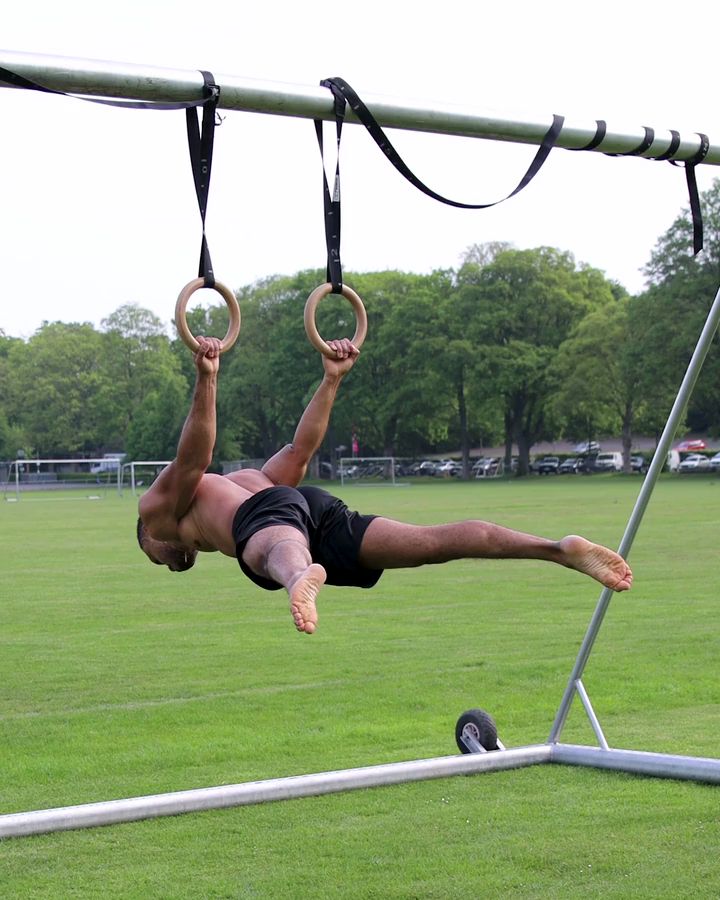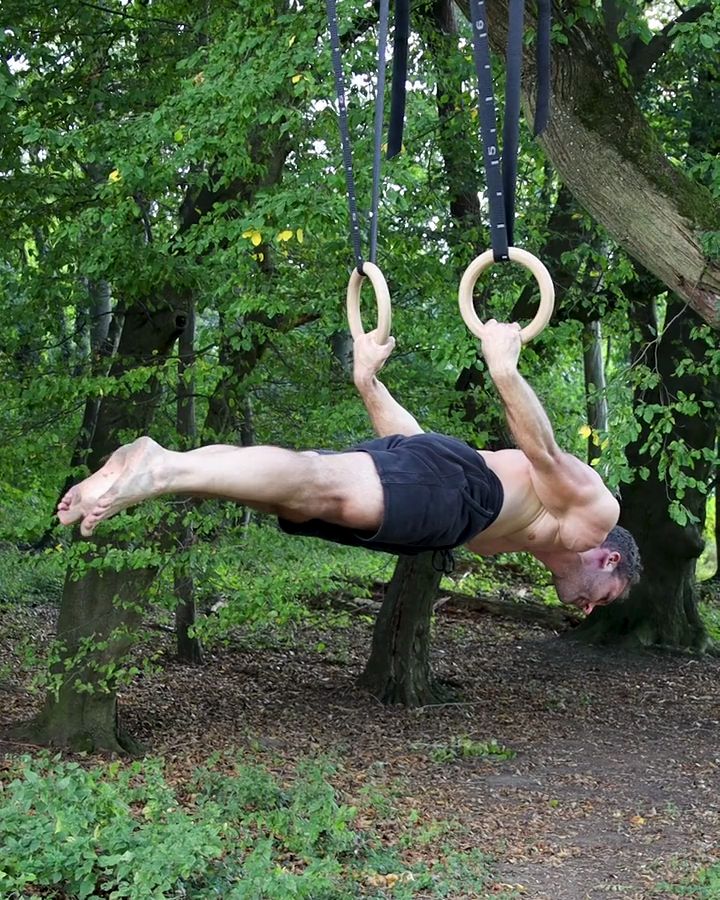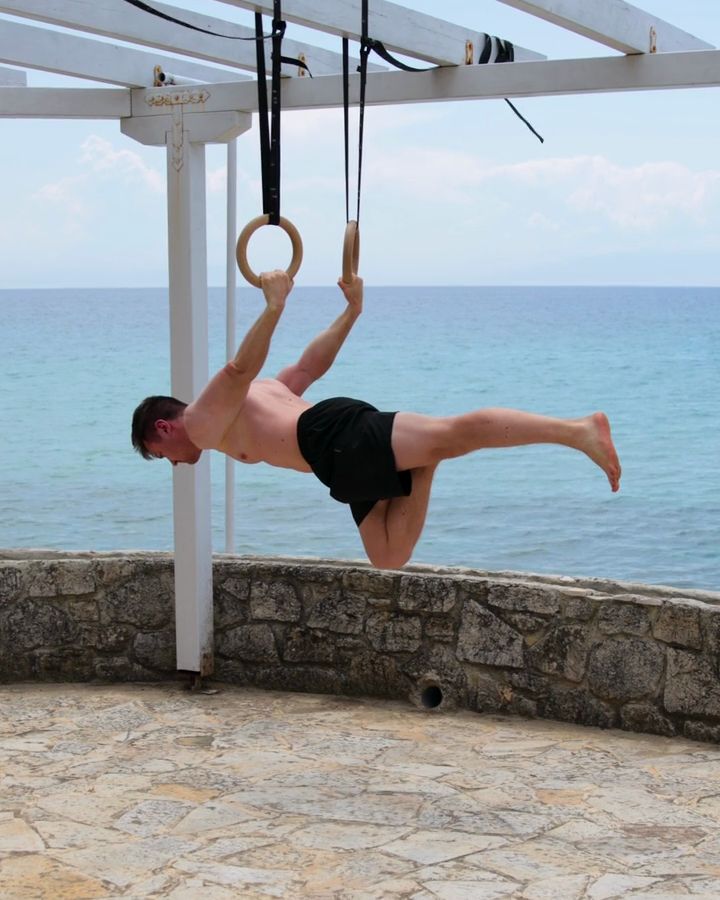Back Lever Pulls with gym rings
Back Lever Pulls on the rings are an advanced exercise that requires you to already have a solid Back Lever. In this movement, you control your body from the German Hang up to the horizontal Back Lever position. This exercise intensely engages the entire upper body, especially the back, shoulders, and biceps. The Back Lever Pull demonstrates maximum control in the Back Lever and is often used to transition between strength elements, such as the Back Lever and Front Lever.
Necessary equipment
Back Lever Pulls with gym rings - the correct execution
- Begin in an inverted hang with your arms straight
- Extend your legs and keep them together
- Ensure that your entire body forms a straight line
- Activate your core and glute muscles to create strong body tension
- Keep your arms straight and actively tense your biceps
- Slowly and controlled, move your body backward into the inverted hang
- Go as deep as possible without losing control
- Avoid arching your back during the movement and ensure that your hips do not collapse
- Hold your hands in the position that is most comfortable for you, whether palms facing forward (pronation) or backward (supination)
- Dynamically and controlled, pull yourself back into the inverted hang
The exercise Back Lever Pulls is intended to be used as a hypertrophy, technique exercise.
Which muscles are trained by Back Lever Pulls?










Primary trained muscles for Back Lever Pulls
Front Delts - The front part of the deltoid muscle, also known as the anterior shoulder, is located at the front of the shoulder. It is primarily involved in the forward movement of the arm, such as lifting the arm forward. It also assists in the internal rotation of the arm. This muscle is engaged in activities that involve lifting objects in front of the body or pushing forward.
Biceps - The biceps brachii muscle is located on the front of your upper arm. It helps you bend your arm at the elbow, rotate your palm upwards, and lift your arm forward.
Secondary trained muscles for Back Lever Pulls
Side Delts - The lateral part of the deltoid muscle, also known as the lateral shoulder, is located on the outside of the shoulder. It is the main muscle responsible for lifting the arm sideways. The lateral shoulder is particularly active when the arm is extended away from the body, such as during lateral raises or lifting objects to the side. It plays a key role in arm abduction and shoulder stabilization.
Chest - The pectoralis major muscle is the large muscle on your chest. It helps you bring your arm towards your body and rotate it inward.
Alternative variants of Back Lever Pulls with gym rings:
Tuck Back Lever Pulls
Tucked Back Lever Pulls reduce the leverage compared to regular Back Lever Pulls, as both legs are drawn in. This decreases the load on the upper body, especially on the lower back and shoulders. This variation is ideal for practicing the movement and body tension before progressing to more challenging versions, such as single-leg or full Back Lever Pulls.
Necessary equipment
Tuck Back Lever Pulls - the correct execution
- Begin in an inverted hang with your arms straight
- Pull your knees towards your chest
- Activate your core and glute muscles
- Try to keep your arms straight and actively tense your biceps
- Lower your body backward into the inverted hang
- Go as deep as possible without losing control
- Hold your hands in the position that is most comfortable for you, whether palms facing forward (pronation) or backward (supination)
- Dynamically and controlled, pull yourself back into the inverted hang
One Leg Back Lever Pulls
Compared to tucked Back Lever Pulls, single-leg Back Lever Pulls are more challenging because extending one leg while bending the other increases the leverage.
Necessary equipment
One Leg Back Lever Pulls - the correct execution
- Start in the inverted hang position
- Pull one knee very close to the ches
- The other side remains stretched
- Lower yourself slowly and in a controlled manner into the hang backwards
- Keep the tension in the biceps and triceps
- Now pull yourself back into the inverted hang position
Similar exercises to Back Lever Pulls
Straddle Back Lever with gym rings
The Straddle Back Lever is a progression exercise in calisthenics that prepares you for the full Back Lever. In this variation, the legs are spread apart to reduce the lever arm, making the exercise easier compared to the full version.
This exercise requires strength in the shoulders, chest, biceps, and lower back. Proper technique is essential: keep your core, glutes, and arm muscles engaged to prevent injuries and perform the exercise effectively.
Back Lever with gym rings
The back lever is a calisthenics exercise where the body is held horizontally with the stomach facing the ground. It requires strong body tension and primarily trains the biceps, shoulder, and core muscles. The back lever particularly challenges stability and body control and demands both strength and flexibility in the arms and shoulders. This advanced exercise requires patience and consistent training.
To prepare, various progressions are recommended: The tucked back lever is a basic exercise where the knees are pulled to the chest to strengthen the core muscles. The straddle back lever and the single-leg back lever are more advanced variations, where spreading or extending the legs increases the load. Exercises like back lever pulls help further develop the necessary strength and stability in the upper body.
The front lever is often mentioned alongside the back lever, where the body is also held horizontally, but with the face facing upwards.
One Leg Back Lever with gym rings
The One Leg Back Lever is a progression exercise in calisthenics that prepares you for the full Back Lever. In this variation, one leg remains straight while the other is bent, reducing the lever arm and making the exercise easier.
This variation demands significant strength in the shoulders, biceps, chest, and lower back. Proper technique is crucial: keep your core, glutes, and arm muscles engaged to prevent injuries and perform the exercise effectively.
This could also be interesting
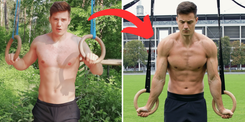
Calisthenics Body Transformation – How to Build a Strong, Lean, and Athletic Physique
Transform your body with Calisthenics! Build muscle, burn fat & achieve a shredded physique with bodyweight training. See real before & after results!
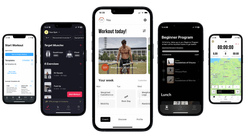
The Best Fitness Apps in 2025: Our Top 10 Recommendations
Don’t miss the best fitness apps of 2025: surprising favorites, free options, and perfect tools for your workouts. Find the ideal app today!
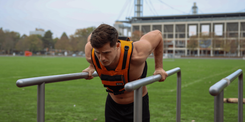
Complete Calisthenics Skills List – 40+ Exercises from Beginner to Pro
Which calisthenics skills should you learn first? And which ones will really help you progress? In this article, you’ll find a complete list of over 40 exercises – from the very basics to the toughest moves for professionals. Each exercise comes with instructions, so you can immediately integrate them into your training.
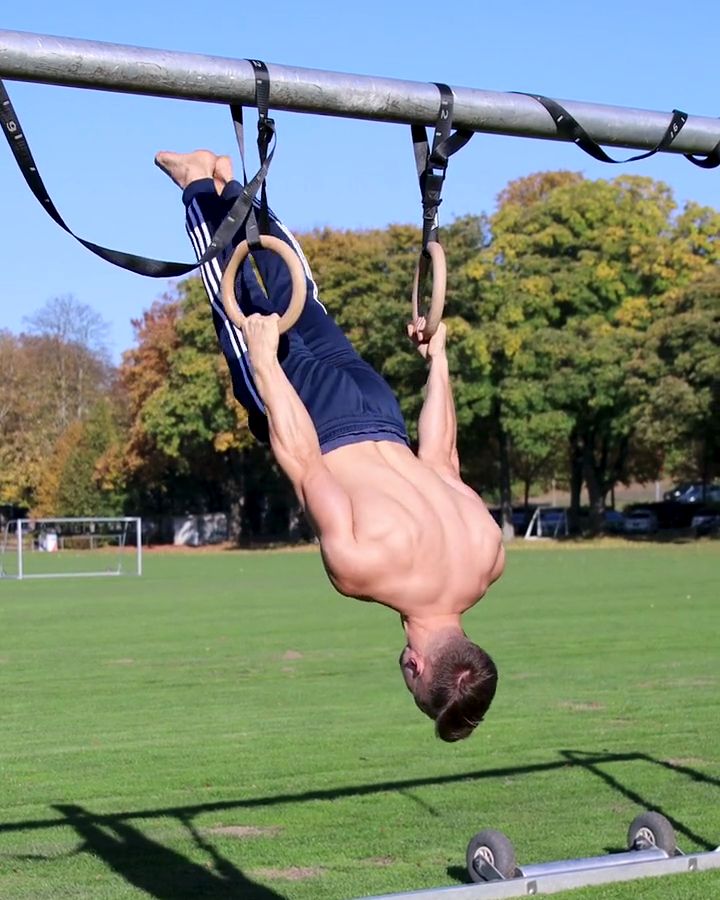
~e5724973d14549c23ea8a586b5736b36.png?alt=media)
